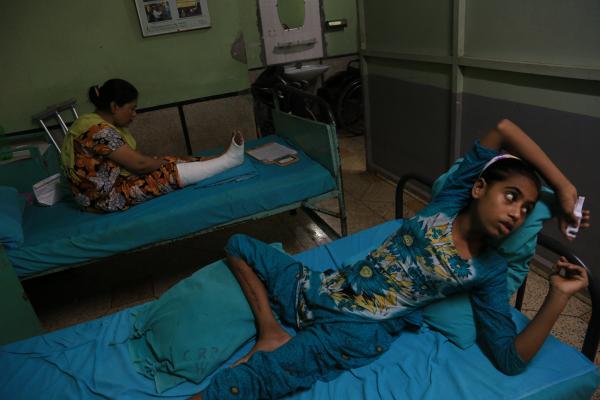
FASHION TO DIE FOR
Last April, the world was shocked and outraged by the Rana Plaza disaster—a building collapse that claimed the lives of more than 1,200 garment workers in a Dhaka sweatshop. Western retailers, who profit handsomely from the cheap labor of Bangladeshi workers, made all the right noises about fixing the abuses and insisting on strict enforcement of safety standards.
Has anything changed in the five months since Rana Plaza?
Pulitzer Center grantee Jason Motlagh returned to Dhaka for an in-depth examination of the system that created Rana Plaza. Writing for Time and The Washington Post, this is what he found in a district that produces leather for the global fashion industry:
"Conditions are nightmarish for the 16,000-plus tannery workers, whose first and secondary exposures to harsh chemicals are said to have reduced life expectancy to less than 50. In the bowels of the M/B Tannery, employees without gloves load chemicals such as chromium and sodium formate into giant churning drums of animal hides. Spillage streaks the factory floor, and many of the workers are mere teenagers."
Despite the heat, stench and health hazards, 16-year-old Muhammad Azim tells Jason he is grateful for his $1.50 a day job as a factory hand to support his father, a rickshaw puller. "I guess I'm getting used to things," the boy says.
CHINA SYNDROME
Beijing-based grantee Sean Gallagher has spent much of the past seven years climbing glaciers on the Tibetan plateau, traversing deserts, and crawling through wetlands—all in an effort to better understand the complex environmental issues facing China in the early 21st century.
In this piece for National Geographic's online site, he presents five myths about China's efforts to balance economic development against environmental degradation. From the "renewable" energy generated by the country's 25,000 large dams to the government's high-profile attempts to reintroduce the giant panda to the wild, Sean offers a nuanced look at the ecosystems of the world's most populous country.
To gain a deeper understanding of what is happening in China, we invite readers to download Sean's "Meltdown: China's Environment Crisis," a new Pulitzer Center e-book that brings together years of photos, videos, and personal stories into one interactive multimedia platform (get it for free at iTunes or at Amazon).
FIRST PLACE
We were delighted to learn that Pulitzer Center grantee Joanne Silberner has won the 2013 Communications Award for Film/Radio/TV from the National Academy of Sciences, National Academy of Engineering, and Institute of Medicine for her radio series on cancer in the developing world.
Joanne shares the prize with David Baron, health and science editor for PRI's The World, which broadcast the series. They were recognized by the academies "for shining a light on the hidden toll cancer takes in impoverished nations, killing more people than HIV, malaria, and TB combined."
Joanne continues her work on non-communicable diseases in the developing world with this story for PRI's The World on hypertension in Cambodia.



